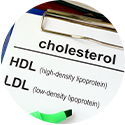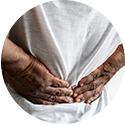“This study represents the largest analysis of major league baseball pitchers that have undergone Tommy John surgery with inclusion of well-accepted performance indices. There have been 215 ulnar collateral reconstructions performed on Major League Baseball pitchers. There is a significant proportion of players (18%) who do not resume major league career. For those that return, a high proportion return to the disabled list, both for arm conditions (in general) and specifically for elbow pain (47% and 23%, respectively). Moreover, many performance statistics showed a decline following surgery, most notably in ERA, WHIP, opposing batting average, innings pitched, percentage of fastballs thrown and fastball velocity.”1
Tommy John Surgery
To a baseball player, “Tommy John” surgery is probably the medical procedure that they would be most familiar with. Named for former Los Angeles Dodger pitcher Tommy John, the procedure invented by Dr. Frank Jobe in 1974 replaces a damaged ulnar collateral ligament in the elbow with a patent’s tendon.
While for some a successful surgery, for others the extensive rehab time 12 to 18 months is frightening.
Many coaches, parents, and players have alarming misconceptions about the realities of Tommy John surgery.
Researchers at Columbia University recently published a report about the misconceptions of Tommy John Surgery.
Listen to what they found:
“Reconstruction of the elbow ulnar collateral ligament, known as Tommy John surgery, is being performed with increasing frequency – we hypothesized that the public’s perception of Tommy John surgery may be incorrect with regard to the indications, operative technique, risks, recovery time, and benefits obtained from the procedure.
“Thirty percent of coaches, 37% of parents, 51% of high school athletes, and 26% of collegiate athletes believed that Tommy John surgery should be performed on players without elbow injury to enhance performance.
Here are some other troubling numbers:
1. Thirty-one percent of coaches, 28% of players, and 25% of parents did not believe number of pitches thrown to be a risk factor, and
2. Thirty-eight percent of coaches, 29% of players, and 25% of parents did not relate pitch type (eg, curve balls) with risk of injury.
Return to Play: Individuals underestimated the time required to return to competition. Twenty-four percent of players, 20% of coaches, and 44% of parents believed that return would occur in < 9 months.” 2
The action of throwing a baseball, especially in pitching is cited for the fraying, wearing and degeneration of the UCL ligament that leads to complete rupture.
Problems of surgery failure
In new research, this time among professional baseball players, doctors looked at pitchers who had a Tommy John Surgery, and then needed a second one when the first one failed.
“The overall rate of return to pre-injury pitch workload following revision UCL reconstruction is low among professional pitchers.” 3
The point is why risk the high failure rate of the second surgery by electing to have the first as an unneeded procedure?
Platelet-rich plasma to repair pitching elbow
Platelet-rich plasma is an injection technique that repairs the damage. It works by allowing the body to heal itself naturally so that the damaged tendons are repaired and strengthened.
Research backs this up:
“PRP is an effective option to successfully treat partial UCL tears of the elbow in athletes.” 4
“Treatment of chronic tennis elbow with leukocyte-enriched PRP is safe and results in clinically meaningful improvements” 5
The treatment
First: a small sample of your blood is drawn and placed in a centrifuge that spins the blood at high speeds, separating the platelets from the other components. The concentrated platelet rich plasma (PRP) is then injected into and around the point of injury, jump-starting and significantly strengthening the body’s natural healing signal. Because your own blood is used, there is no risk of a transmissible infection and a very low risk of allergic reaction.
The body’s first response to soft tissue injury is to deliver platelets. Packed with growth and healing factors, platelets initiate repair and attract the critical assistance of stem cells. PRP therapy’s natural healing process intensifies the body’s efforts by delivering a higher concentration of platelets.
Because the goal of PRP therapy is to resolve pain through healing, it could prove to have lasting results. Initial improvement may be seen within a few weeks, gradually increasing as the healing progresses.
Research studies and clinical practice have shown
PRP therapy to be very effective at relieving pain and returning patients to their normal lives. Both ultrasound and MRI images have shown definitive tissue repair after PRP therapy, confirming the healing process. The need for surgery can also be greatly reduced by treating injured tissues before the damage progresses and the condition is irreversible.
Magaziner Center for Wellness performs over 1,500 PRP procedures each year. So you know at Magaziner, your wellness is in very good hands.
1. http://www.abstractsonline.com/plan/ViewAbstract.aspx?mID=3358&sKey=493a4472-e6c5-4acf-8c39-7588796fd6a5&cKey=543b49e3-0bf2-4bfe-a036-e3c30c12e41c&mKey=4393d428-d755-4a34-8a63-26b1b7a349a1
3. Jones KJ, Conte S, Patterson N, ElAttrache NS, Dines JS. Functional outcomes following revision ulnar collateral ligament reconstruction in Major League Baseball pitchers. J Shoulder Elbow Surg. 2013 May;22(5):642-6. doi: 10.1016/j.jse.2013.01.031.
4. Podesta L, Crow SA, Volkmer D, Bert T, Yocum LA. Treatment of partial ulnar collateral ligament tears in the elbow with platelet-rich plasma. Am J Sports Med. 2013 Jul;41(7):1689-94. doi: 10.1177/0363546513487979. Epub 2013 May 10.
5. Mishra AK, Skrepnik NV, Edwards SG, Jones GL, Sampson S, Vermillion DA, Ramsey ML, Karli DC, Rettig AC. Platelet-Rich Plasma Significantly Improves Clinical Outcomes in Patients With Chronic Tennis Elbow: A Double-Blind, Prospective, Multicenter, Controlled Trial of 230 Patients. m J Sports Med. 2013 Jul 3. [Epub ahead of print]



































